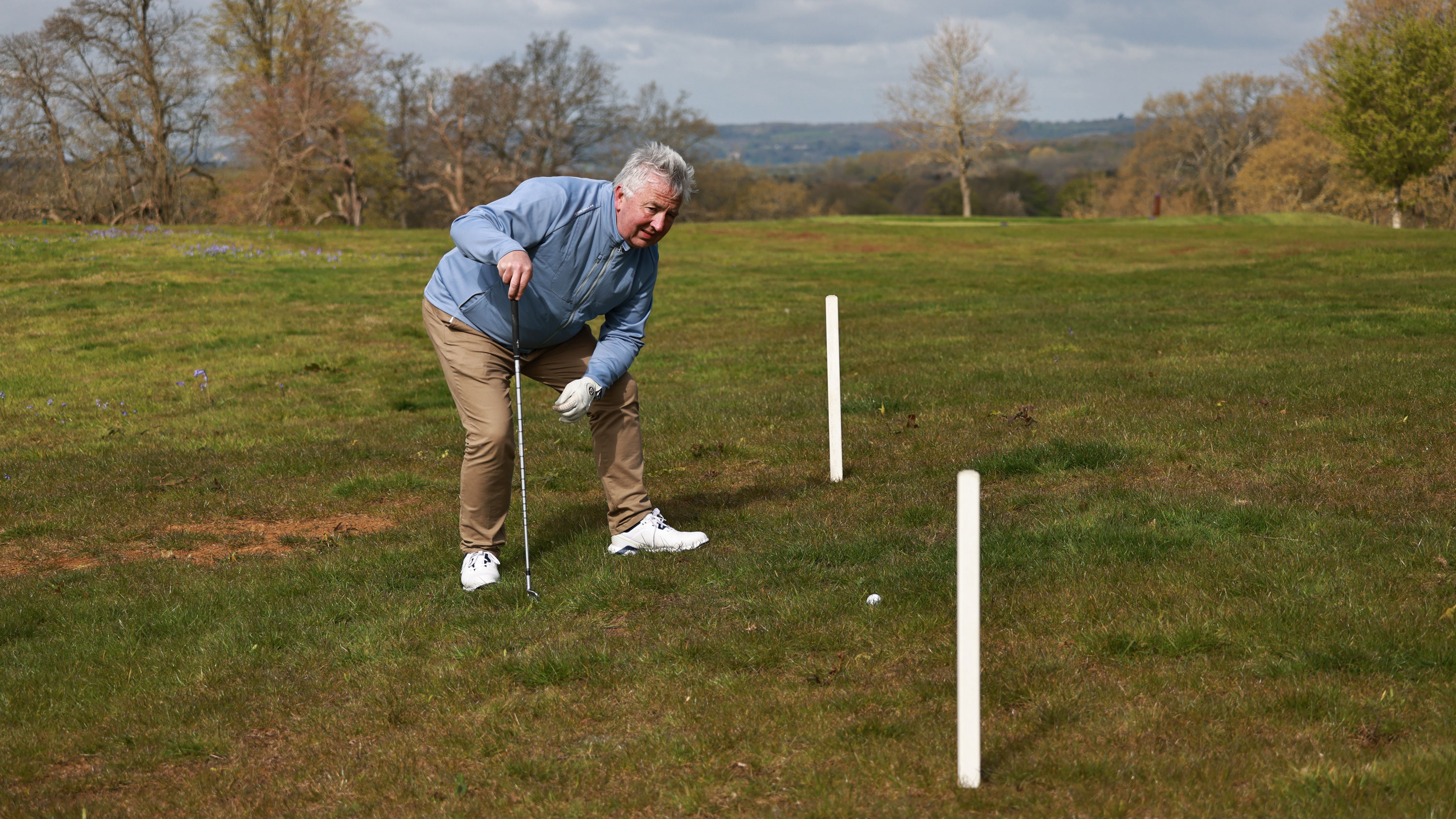My Ball Came To Rest On The White Out Of Bounds Line. Is It In Or Out?
If you find your ball on the out of bounds line, can you play on, or are you facing a long walk back? We have the answer here.


There are few more anxious walks in golf than when you’re heading towards the out of bounds (OOB) and you’re not sure whether your ball has just stayed in or just trickled out.
If it’s in, you’re going to have a shot to the green. Nothing is lost and you can carry on your merry way. If it’s drifted out, you’re facing a long walk back to play again, under penalty of one shot, from where the last stroke was made. Or, if you’ve done the right thing, you’ll move to play your provisional ball.
When you reach your ball, it’s close. It’s right on the white out of bounds line. Are you in luck, or not?
Let’s start by giving an outline of out of bounds in The Rules.
OOB is defined as – All areas outside the boundary edge of the course as defined by the committee.
That boundary edge may be defined in a number of ways – white stakes, lines on the ground, fences, walls, railings, roads etc.
However it is defined, if your ball has strayed beyond the limits of the course under Rule 18.2 you must play another ball from where you last played under penalty of stroke and distance (Rule 14.6), whether from the tee or fairway or any other spot. So, if it was your tee-shot that had gone OOB, you would now be playing three off the tee.
Subscribe to the Golf Monthly newsletter to stay up to date with all the latest tour news, equipment news, reviews, head-to-heads and buyer’s guides from our team of experienced experts.
A ball is in bounds if it lies on or touches the ground or anything else (such as any natural or artificial object) inside the boundary edge. If it’s in the air above the boundary edge, suspended in a bush for instance, if any part of the ball overhangs the course, it’s in!
Where out of bounds is defined by white stakes or a fence, the out of bounds line runs between the nearest inside points at ground level of the stakes or fence posts.
When a line on the ground is used, the line itself is out of bounds. However, a ball is deemed in bounds even if a small part of it lies on the course side of the boundary line.
If your ball sits totally on the white out of bounds line, with no part of it on the course side, it is out of bounds. You’re out of luck.
If then you find your ball bang smack on the white line. You’re out.
Rules quiz

Fergus is Golf Monthly's resident expert on the history of the game and has written extensively on that subject. He has also worked with Golf Monthly to produce a podcast series. Called 18 Majors: The Golf History Show it offers new and in-depth perspectives on some of the most important moments in golf's long history. You can find all the details about it here.
He is a golf obsessive and 1-handicapper. Growing up in the North East of Scotland, golf runs through his veins and his passion for the sport was bolstered during his time at St Andrews university studying history. He went on to earn a post graduate diploma from the London School of Journalism. Fergus has worked for Golf Monthly since 2004 and has written two books on the game; "Great Golf Debates" together with Jezz Ellwood of Golf Monthly and the history section of "The Ultimate Golf Book" together with Neil Tappin , also of Golf Monthly.
Fergus once shanked a ball from just over Granny Clark's Wynd on the 18th of the Old Course that struck the St Andrews Golf Club and rebounded into the Valley of Sin, from where he saved par. Who says there's no golfing god?
You must confirm your public display name before commenting
Please logout and then login again, you will then be prompted to enter your display name.